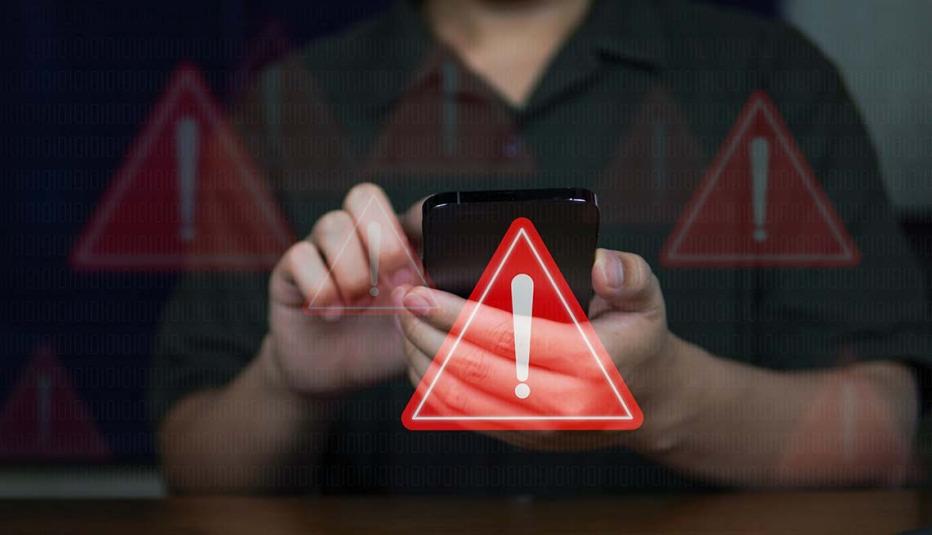AARP Hearing Center
New research from AARP examines veterans’ sentiments about fraud, their experiences with it, and steps they are taking to stay safe. The findings from AARP’s study of 570 veterans and active-duty military service members reveal veterans’ actions that pose an elevated level of risk from fraud — as well as some practices they have adopted to prevent fraud.


Veterans, like the general public, are susceptible to fraud.
Veterans are as susceptible to fraud as the general public, but they can also be targeted with tactics related to their military background, benefits, or sense of trust. Our survey finds:
- Veterans, like most adults, know fraud can happen to anyone, thus triggering some degree of worry for most veterans (78 percent).
- Their concern is well-founded as 39 percent of veterans (over 7.5 million) have received solicitations from someone claiming to be from the Department of Veterans Affairs or another government agency, with 28 percent (an estimated 5.5 million) believing their veteran status made them a target.
- While many appear to avoid victimization from fraud, 27 percent (over about 5 million) have lost money to fraud, with most losing more than $500.
Many are employing protective measures.
Understanding vulnerabilities to fraud and scams is crucial. Applying this knowledge offers protection. Fortunately, many veterans are currently employing known practices to help stay safe online.
- Few veterans (12 percent) accept friend requests on social media from people they do not know.
- Just under a quarter of veterans (25 percent) use their social media account as a login for other sites.
- Half (50 percent) use a password manager.
- Veterans are quick to apply security updates: Over 6 in 10 either have their device set to install updates automatically (35 percent) or they administer the update themselves immediately (32 percent).
- Most veterans (77 percent) are using facial or fingerprint recognition or a passcode or password to unlock their electronic devices.
- Most (74 percent) are using protective software to limit their fraud exposure.
But more support is needed.
Veterans may be unknowingly putting themselves at risk.
- Most (84 percent) have taken quizzes or surveys on social media and have downloaded free apps (66 percent) which can expose users to malicious software.
- Only a third (33 percent) use a distinctly different password on all of their accounts. This means when one account is compromised, others are at risk.
- Just over half (52 percent) answer calls from people they do not know, which can increase exposure to scams, fake identities, voice recording tricks, and pressure tactics — all ways criminals try to steal information and/or money.
- Less than half (39 percent) use a virtual private network (VPN) to encrypt their internet connection and protect their data and privacy when using public wi-fi.
Notably, over a third (37 percent, or over about 7 million veterans) feel there are not enough resources to help protect veterans. Specifically, veterans would like to have better reporting mechanisms, more legal support, and increased collaboration between veteran organizations and financial institutions, in addition to more educational materials and training.
Combating rampant and growing fraud will take the actions of industry, law enforcement, policymakers, and individuals.
Organizations supporting veterans and military families have a vital role to play in fraud prevention. The AARP Veterans Fraud Center, an online education and resource center to help protect veterans, service members, and their families against fraud, can be the first line of defense. In addition, AARP Fraud Watch Network offers Watchdog Alerts, the AARP Fraud Watch Network Helpline, the AARP Scam Tracking Map, and other resources.
While AARP and others will continue to expand our initiatives to get out the message of fraud prevention, we need a “whole of society” response to this crisis. It will take actions by industry, law enforcement, policymakers and individuals to mount a defense that can help turn the tide on fraud against consumers, many of whom are veterans.
Methodology
The report is based on a survey of 1,596 Americans age 18 and older, including an oversample of 570 veterans and active-duty military service members. The survey was fielded March 6–10, 2025 via phone and online by NORC at the University of Chicago, and was weighted to reflect the American population by gender, age, education, race/ethnicity and region.
For more information, please contact Alicia R. Williams at arwilliams@aarp.org. For media inquiries, contact External Relations at media@aarp.org.



































































